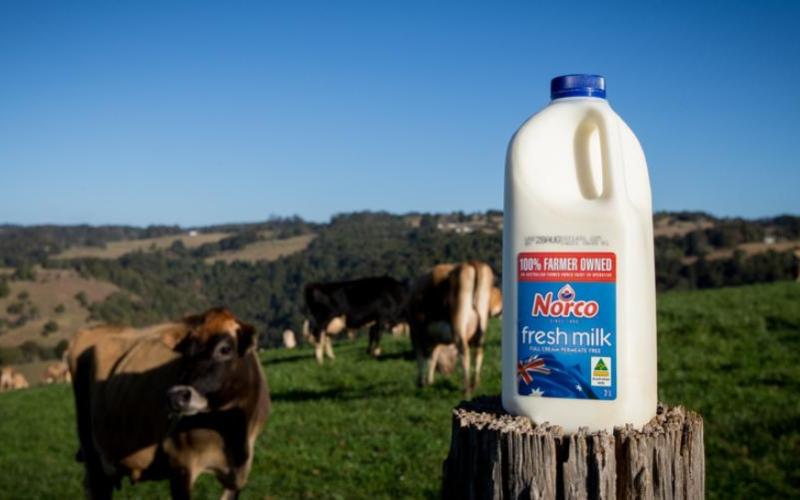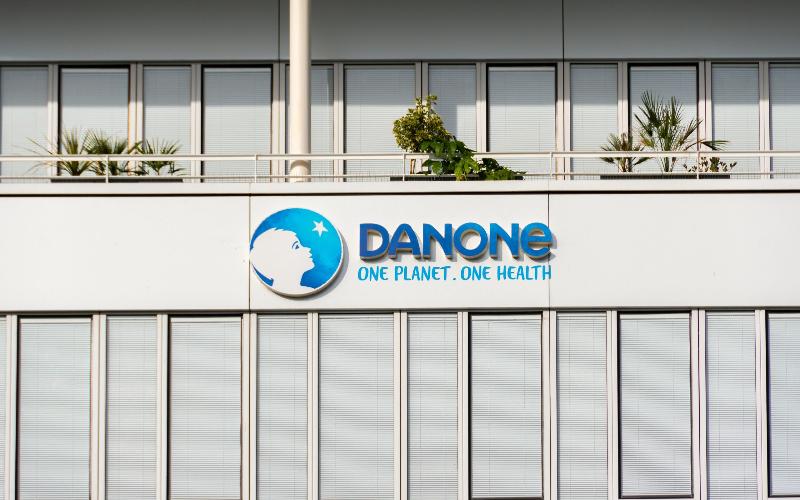China's Milk Companies Engage in Promo War: Sluggish Demand and Excess Milk
Sourse: The DairyNews
A recently published report, "Monthly Analysis of the Supply and Demand Situation for Agricultural Products," prepared by the Market and Information Technology Department of the Ministry of Agriculture and Rural Affairs of China, reveals that as the Spring Festival approaches, the consumption of dairy products is reaching a short-term peak. Milk processing companies are actively stockpiling and eagerly acquiring raw milk, as reported by Blue Whale Finance.

Li Jiaci, a senior consultant at CIC Consulting, told Blue Whale Finance journalists that every year from December to the fifteenth day of the first lunar month of the following year, dairy products represented by packaged white milk enter a season of peak consumption. "Compared to previous years, dairy products across all price ranges have been promoted more intensively this year, and price competition has become more intense," added Li Jiaci.
An excess of raw milk and sluggish demand have sparked a promotional war among milk companies. Reporters from Blue Whale Finance recently visited several supermarkets in Beijing and found that many high-end milk brands such as Jindian, Deluxe, and Sanyuan are now being sold at a discount, with promotion intensity ranging from 25% to 10%. It's worth noting that this discounted milk is not expired; its production dates are concentrated in October and November 2023.
Why do many milk companies consistently launch promotional campaigns? Let's first look at the production side. Data shows that in 2023, the livestock population in the top 40 breeding enterprises reached 2.8 million dairy cows, a 25% increase compared to 2021. Milk production is expected to be around 29.04 million tons, a 7.2% growth.
Accompanying consumption has decreased. Nielsen market research indicates an 8.6% decline in sales of liquid dairy products in 2022 compared to 2021 and a 2.8% year-on-year decline in the first half of 2023.
Previous financial reports from many companies cited weak domestic consumer demand for dairy products, falling prices of raw milk, and rising feed costs as explanations for performance declines. The combination of reduced consumption growth and accelerated milk production has led to market supply exceeding demand, resulting in periodic oversupply of raw milk.
Li Shenli, chief scientist of the National Dairy Industry Technology System, reported that the expected oversupply of raw milk will exceed 2 million tons in 2023.
In this context, price reduction promotions have become a "mandatory option" for many milk companies. Chen Xiaolun, an investor in the food and beverage industry, believes that the dairy industry in China is relatively mature, and even if it expands its application scenarios, digesting huge inventories will not be easy. Large dairy companies can use promotional activities and other marketing initiatives to further expand their market share during this time; however, regional dairy products find it even more challenging to gain an advantage. Regional companies may still weather difficult times by reducing their market share.
Due to the short shelf life of raw milk, many farms and milk companies engaged in milk collection prefer to process it into powder. Liquid raw milk undergoes sterilization, spray drying, etc., to turn it into dry milk for extended shelf life. According to Li Shenli's research, it is expected that dry milk reserves will reach 250,000 to 300,000 tons in 2023.
Sluggish market demand and supply have also led to a further decline in raw milk prices. According to Hou Junwei, general manager of Shanghai Ruinong Consulting, the price of white milk is expected to decrease by 15-25% in 2023 compared to 2019. Despite continuous declines in 2023, raw milk prices have not changed in the peak season of 2024.
The price war continues, putting pressure on the profitability of milk companies. The overall price of dairy products has decreased, further reducing the industry's profit. According to statistical data from the Beijing News, in the first half of 2023, 18 out of 36 listed and registered milk companies on the stock exchange experienced a decline in net profit. However, due to the lower net profit of most milk companies in the first three quarters of 2022, resulting in a low base, the net profit level of A-share listed milk companies increased in the first three quarters of 2023 compared to the previous year.
"Promotional campaigns have further reduced market space and profit margins for products in the middle and low price segments. Ordinary products from small and medium brands practically bring no profit," said Hou Junwei.
The dairy industry is facing "growing pains." Li Jiaci speculated that in the short term, in addition to using traditional methods to stimulate price reductions, dairy companies may promote sales channels for further reduction. For example, moving from traditional supermarkets and hypermarkets to everyday demand stores, public shops, metro stores, etc., which are closer to consumers. Additionally, the construction of rural milk stations to make milk consumption more convenient for rural residents. In the medium and long term, expanding the diversity of dairy products and opening up more consumption scenarios are essential measures to distribute growing milk production volumes. On the other hand, product line differentiation by dairy companies is also an effective way to meet market needs.
Entering 2024, the industry expects that the price war on dairy products will continue, and "profitability" is the keyword in the consumer dairy products market. Adopt a Cow believes that consumers will prefer to buy dairy products with high protein content, good digestibility, and a more aromatic taste at a lower price.
Dairy industry analyst Sun Lyan concluded that the contradiction with insufficient consumption will still be noticeable in 2024. Dairy products will still need promotion, and the entire import situation will continue to demonstrate structural restructuring. "As relative excess demand and supply are still in the recovery stage, price competition in the industry is expected to continue in 2024. Combined with higher consumer demands for product quality and living standards, products with obvious economic characteristics are expected to break through. At the same time, products with differentiated competition are expected to use more market opportunities, satisfy consumer needs, and work towards increasing market share," said Li Jiaci.
An excess of raw milk and sluggish demand have sparked a promotional war among milk companies. Reporters from Blue Whale Finance recently visited several supermarkets in Beijing and found that many high-end milk brands such as Jindian, Deluxe, and Sanyuan are now being sold at a discount, with promotion intensity ranging from 25% to 10%. It's worth noting that this discounted milk is not expired; its production dates are concentrated in October and November 2023.
Why do many milk companies consistently launch promotional campaigns? Let's first look at the production side. Data shows that in 2023, the livestock population in the top 40 breeding enterprises reached 2.8 million dairy cows, a 25% increase compared to 2021. Milk production is expected to be around 29.04 million tons, a 7.2% growth.
Accompanying consumption has decreased. Nielsen market research indicates an 8.6% decline in sales of liquid dairy products in 2022 compared to 2021 and a 2.8% year-on-year decline in the first half of 2023.
Previous financial reports from many companies cited weak domestic consumer demand for dairy products, falling prices of raw milk, and rising feed costs as explanations for performance declines. The combination of reduced consumption growth and accelerated milk production has led to market supply exceeding demand, resulting in periodic oversupply of raw milk.
Li Shenli, chief scientist of the National Dairy Industry Technology System, reported that the expected oversupply of raw milk will exceed 2 million tons in 2023.
In this context, price reduction promotions have become a "mandatory option" for many milk companies. Chen Xiaolun, an investor in the food and beverage industry, believes that the dairy industry in China is relatively mature, and even if it expands its application scenarios, digesting huge inventories will not be easy. Large dairy companies can use promotional activities and other marketing initiatives to further expand their market share during this time; however, regional dairy products find it even more challenging to gain an advantage. Regional companies may still weather difficult times by reducing their market share.
Due to the short shelf life of raw milk, many farms and milk companies engaged in milk collection prefer to process it into powder. Liquid raw milk undergoes sterilization, spray drying, etc., to turn it into dry milk for extended shelf life. According to Li Shenli's research, it is expected that dry milk reserves will reach 250,000 to 300,000 tons in 2023.
Sluggish market demand and supply have also led to a further decline in raw milk prices. According to Hou Junwei, general manager of Shanghai Ruinong Consulting, the price of white milk is expected to decrease by 15-25% in 2023 compared to 2019. Despite continuous declines in 2023, raw milk prices have not changed in the peak season of 2024.
The price war continues, putting pressure on the profitability of milk companies. The overall price of dairy products has decreased, further reducing the industry's profit. According to statistical data from the Beijing News, in the first half of 2023, 18 out of 36 listed and registered milk companies on the stock exchange experienced a decline in net profit. However, due to the lower net profit of most milk companies in the first three quarters of 2022, resulting in a low base, the net profit level of A-share listed milk companies increased in the first three quarters of 2023 compared to the previous year.
"Promotional campaigns have further reduced market space and profit margins for products in the middle and low price segments. Ordinary products from small and medium brands practically bring no profit," said Hou Junwei.
The dairy industry is facing "growing pains." Li Jiaci speculated that in the short term, in addition to using traditional methods to stimulate price reductions, dairy companies may promote sales channels for further reduction. For example, moving from traditional supermarkets and hypermarkets to everyday demand stores, public shops, metro stores, etc., which are closer to consumers. Additionally, the construction of rural milk stations to make milk consumption more convenient for rural residents. In the medium and long term, expanding the diversity of dairy products and opening up more consumption scenarios are essential measures to distribute growing milk production volumes. On the other hand, product line differentiation by dairy companies is also an effective way to meet market needs.
Entering 2024, the industry expects that the price war on dairy products will continue, and "profitability" is the keyword in the consumer dairy products market. Adopt a Cow believes that consumers will prefer to buy dairy products with high protein content, good digestibility, and a more aromatic taste at a lower price.
Dairy industry analyst Sun Lyan concluded that the contradiction with insufficient consumption will still be noticeable in 2024. Dairy products will still need promotion, and the entire import situation will continue to demonstrate structural restructuring. "As relative excess demand and supply are still in the recovery stage, price competition in the industry is expected to continue in 2024. Combined with higher consumer demands for product quality and living standards, products with obvious economic characteristics are expected to break through. At the same time, products with differentiated competition are expected to use more market opportunities, satisfy consumer needs, and work towards increasing market share," said Li Jiaci.














